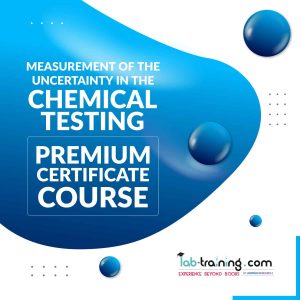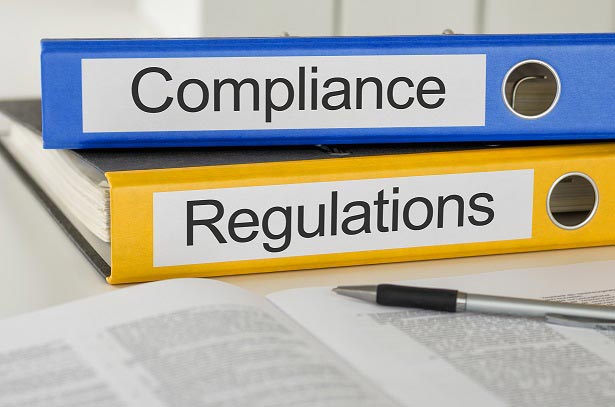What are different stages of CAPA in Quality Control Operations?


CAPA or Corrective Action and Preventive Action is a crucial exercise that contributes immensely in improvement of quality in laboratories which are part of manufacturing organizations.
Consumer acceptability and performance features of manufactured goods are governed by the control specifications of manufactured goods. Any deviations in manufacturing controls or test procedures need to be identified and corrected on top priority to avoid financial losses or loss of reputation.
Here we will learn more about the CAPA process steps. So you will be able to understand the concept and implement it correctly.
What is CAPA?
CAPA is an exercise for detection of potential problems of non -conformance affecting the quality of analysis and eliminating them to prevent recurrences.
In simpler terms, CAPA in quality control is a process through which we can find the underlying problems so that they can be solved with proper measures. Plus, it includes documentation of the same. This benefits when the same issue arises in the future.
Usually, people connect the two aspects of CAPA, i.e., corrective action and preventive action. But these are different from each other. You can understand this with the help of their definitions.
- Corrective Action: The CA part of CAPA is responsible for resolving the already existing non-conformity or an unpleasant circumstance. It means corrective action is taken to eliminate the problems that were previously present and reduce their chances of occurring again.
- Preventive Action: On the other hand, preventive action is taken beforehand based on the potential non-conformities’ causes to avoid them altogether. It means the PA part of CAPA is responsible for identifying and keeping away the issues that may arise in the future.
Most people think that the complete CAPA quality system should run together in series. However, that is not the case. These processes are separate from each other, and they can take place at their own time. Practically, preventive action should take place first to ensure that the need for corrective action does not arise at all. It should not be the other way around.
Let’s understand these two in more detail
Corrective Action Vs Preventive Action
Corrective Action
Corrective action is a remedial measure taken to counter a quality failure or a non conformance and to ensure that it does not recur. It comes into play when something is going wrong or has already gone wrong.
However, you should not mix it up with a correction. The term ‘correction’ means to fix an immediate problem without any other consideration. Contrastingly, corrective actions include certain measures taken over a period of time to resolve the issue and make sure it does not recur. The CAPA process steps involved in CA are:
- Identification and documentation of the problem
- A temporary repair to correct the problem immediately
- Fix the underlying issues that caused the problem in the first place
- Prevent recurrence with proper measures
- Implement the measures found in the previous steps and document everything
- Continuous checking to ensure the implemented measures work effectively
Preventive Action
Preventive action comes into play when possibilities of quality failure or non conformance are identified which can lead to future quality system failures. In other words it is a proactive approach to prevent quality problems and implementation of steps to improve quality.
The PA part of the CAPA report should take place first to avoid the issues and ensure they never occur. Then if something happens, the CA part will come into the role.
Different tools can be used here to analyze and find potential problems. Some common examples of preventive actions include:
- Checklist generation
- Creating and abiding by the preventive maintenance schemes to keep the equipment effective, efficient, and safe
- Creating plans for any sudden unfortunate events that may take place in the facility
- Regularly checking and updating the policies related to safety and security
Sources of information for initiating CAPA
At times quality issues go un-noticed and one has to rely on:
- Inputs from both internal and external auditors
- Customer complaints
- Feedback from laboratory staff
- Interlaboratory proficiency test reports
What Is a CAPA Report?
A CAPA report is nothing but the complete documentation of any problem. It includes both the CA and the PA parts. The information consists of all details regarding how the problem occurred, what trouble was caused by it, and how it got resolved. This report can be kept for future purposes if the same issue arises again.
Stages of CAPA
Stage-1 Identification
Identification defines an existing problem or a potential problem. It includes :
- Explanation of problems
- Documentation of available evidence
- Internal audits, data trends, process monitoring, customer complaints and QA inspection
Stage-2 Evaluation
The objective is to determine the need for action and the level of action required
- Potential impact – concerns the impact on company and clients in terms of cost, product quality, safety and customer satisfaction
- Risk – level of risk associated with the problem
- Remedial action – potential impact and risk assessment to help decide the required remedial action
Stage-3 Investigation
- Review various parameters related to a problem e.g. equipment, materials, procedures, analyst training, software capabilities and environmental parameters
- Fix individual responsibilities and resources requirement such as finances, manpower and equipment. These requirements are worked out and documented
Stage-4 Analysis
Analysis leads to the root cause of the problem
- Collect data and try to list out the possible sources so as to arrive at the root cause. Data may come from such sources as records, processes, service information, operations, etc
- Root cause will not simply deal with symptoms but help uproot the main contributing factors
Stage-5 Action Plan
- Action plan is aimed at correcting and preventing future occurrence of failure. Plan includes changes to be made in existing procedures and assignment of responsibilities
- All modifications and changes must be communicated to concerned personnel, departments and suppliers
- Employee training is an essential part of any change and is always part of an action plan
Stage-6 Implementation
Implementation stage involves:
- Execution of identified tasks
- Modification in documents
- Modification in processes
- Modification in environmental conditions
- Provision of training on modifications
All stages in implementation stage need to be properly documented
Stage-7 Follow Up
The follow up verifies completion of the identified tasks and also assesses the appropriateness and effectiveness of the action taken. The validatory report must record:
- If the root cause of the problem is solved
- Any resulting secondary situations have been corrected
- Proper controls established to prevent future recurrence
- Actions taken that have no other adverse effects
- Adequate monitoring arrangements that are in place with assigned responsibilities
A CAPA report should be signed by the authorized personnel within the operational divisions of the organization.

 AAS, GC & HPLC Certificate Course Bundle
AAS, GC & HPLC Certificate Course Bundle  Certificate Course on AAS
Certificate Course on AAS  Certificate Course on GC
Certificate Course on GC  Certificate Course on High Performance Thin Layer Chromatography (HPTLC)
Certificate Course on High Performance Thin Layer Chromatography (HPTLC)  Certificate Course on ISO/IEC 17025:2017 - CPD Certified
Certificate Course on ISO/IEC 17025:2017 - CPD Certified  Certificate Course on Lab Safety
Certificate Course on Lab Safety  Certificate Course on Measurement Uncertainty in Chemical Testing
Certificate Course on Measurement Uncertainty in Chemical Testing  AAS, GC & HPLC Certificate Course Bundle
AAS, GC & HPLC Certificate Course Bundle  Certificate Course on AAS
Certificate Course on AAS  Certificate Course on GC
Certificate Course on GC  Certificate Course on High Performance Thin Layer Chromatography (HPTLC)
Certificate Course on High Performance Thin Layer Chromatography (HPTLC)  Certificate Course on ISO/IEC 17025:2017 - CPD Certified
Certificate Course on ISO/IEC 17025:2017 - CPD Certified  Certificate Course on Lab Safety
Certificate Course on Lab Safety  Certificate Course on Measurement Uncertainty in Chemical Testing
Certificate Course on Measurement Uncertainty in Chemical Testing 



Very good and useful article.
Ultimate job & keep it up sir we are stand with you for you help